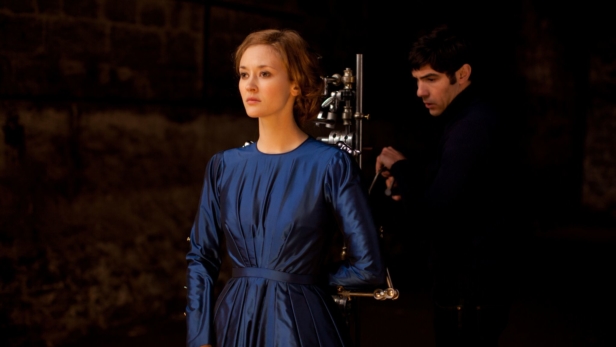“He’s confused photography and reality for so long, he can no longer tell the living from the dead.”
22-year-old Marie (Constance Rousseau) is talking about her father Stéphane (Olivier Gourmet), whose obsession both with daguerreotypy and with his late wife Denise has made him turn his back on fashion photography, and keep to his large house-cum-workshop on the outskirts of Paris. Apart from the occasional dead child or ageing woman whose likeness needs preserving, the model for Stéphane’s laborious art is mostly Marie herself who, like her mother before her, must stay still for hours on end so that her image can be captured by the outmoded practice. Here motion shacks up with stasis: while young Marie makes plans to leave home for a gardening job in Toulouse, Stéphane is determined to fix her in place – and the arcane device to which he straps his subjects is not in fact the worst method he uses to immobilise them. In immortalising his models on his plates, Stéphane also hastens their death.
Into this toxic environment – and bringing toxicity of his own – comes Jean Malassis (Tahar Rahim), Stéphane’s newly hired assistant who has designs both on Marie and on the potential profits to be skimmed if he can persuade Stéphane to sell the house. Yet Stéphane, convinced that Denise still haunts his home, will not be dislodged – and soon Jean, desperate to hold onto Marie, will also find himself losing his grip on reality.
Aping the deliberate pace of Stéphane’s icon-making process, and sharing its themes, its setting and the name of one of its principal characters with Jacques Rivette’s The Story of Marie And Julien (2003), Kiyoshi Kurosawa’s slow-burning ghost story Daguerrotype concerns present absences. The ‘e’ missing from the centre of its title foreshadows the dead subjects mummified in Stéphane’s daguerreotypes, the spectre of Denise, and the not-quite-all-there aloofness of Marie. It is a Creepy reflection on the power of images to conserve, fascinate and delude.
